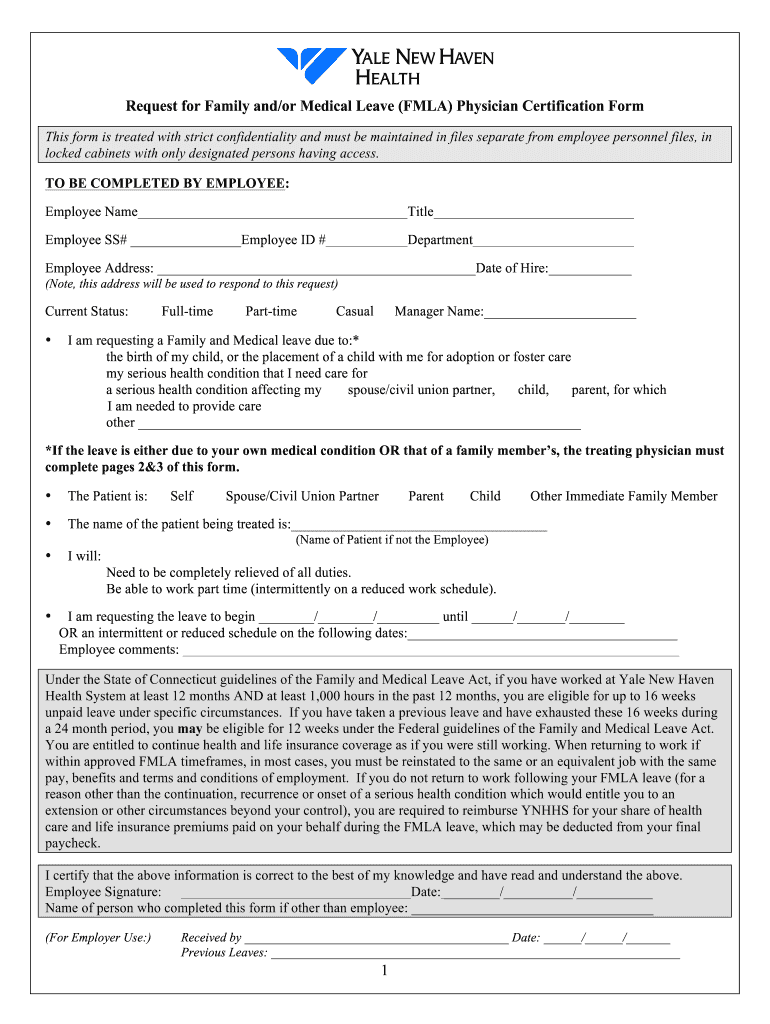FMLA Paperwork Guide for Fibromyalgia Sufferers

The Family and Medical Leave Act (FMLA) provides employees with the right to take unpaid leave for specific family and medical reasons, which includes conditions like fibromyalgia. For those suffering from this chronic pain disorder, understanding how to navigate FMLA can be crucial for maintaining employment while managing health needs. This guide will walk you through the essentials of FMLA paperwork when dealing with fibromyalgia.
Understanding Fibromyalgia and Its Impact on Employment


Fibromyalgia is a complex disorder characterized by widespread musculoskeletal pain, fatigue, sleep disturbances, and cognitive issues. These symptoms can significantly affect one’s ability to work:
- Pain: Chronic pain might make it difficult to perform regular job duties, especially those that require physical exertion.
- Fatigue : Extreme tiredness can reduce productivity and increase the need for time off.
- Cognitive Dysfunction: Known as “fibro fog,” it can affect memory, concentration, and decision-making capabilities at work.
Qualifying for FMLA with Fibromyalgia

To qualify for FMLA:
- You must work for a covered employer (most employers with 50 or more employees).
- You need to have worked for that employer for at least 12 months.
- You should have worked at least 1,250 hours during the 12 months before taking leave.
Importantly, fibromyalgia can qualify as a serious health condition under FMLA if it involves:
- Incapacity for more than three consecutive calendar days, and
- Continuing treatment by a healthcare provider (HCP).
Filling Out FMLA Paperwork

Here are the steps to fill out FMLA paperwork for fibromyalgia:
1. Obtain the Forms

Your HR department or manager will provide you with the necessary FMLA forms:
- WH-380-E: Certification of Health Care Provider for Employee’s Serious Health Condition.
- WH-380-F: Certification of Health Care Provider for Family Member’s Serious Health Condition (if applicable).
2. Complete Employee Section

Fill out your section of the form, which includes:
- Personal information.
- Details about your employer.
- A brief description of your condition.
- Requested leave dates.
3. Have Your Healthcare Provider Complete Their Section

Your healthcare provider needs to complete their part of the form, detailing:
- The medical facts of your condition.
- The expected duration of your incapacity.
- Any necessary treatment schedule.
⚠️ Note: Ensure your healthcare provider provides sufficient medical documentation to support your fibromyalgia diagnosis and the necessity for leave.
Submitting Your FMLA Paperwork

Once you’ve filled out your part and your healthcare provider has completed theirs:
- Submit the forms to your HR department or direct supervisor, often with a deadline in mind.
- Keep copies of all documents for your records.
Employer’s Response

Your employer should respond:
- Within 5 business days for approval or denial.
- If further information is needed, they will contact you.
Using Intermittent Leave for Fibromyalgia

| Leave Option | Description | Example |
|---|---|---|
| Intermittent Leave | Take leave in separate blocks of time for treatments or flare-ups. | Half-days off for doctor’s appointments or pain flare-ups. |
| Reduced Schedule | Reduce work hours temporarily due to your condition. | Work from 8 AM to 1 PM instead of 8 AM to 5 PM. |

🚨 Note: Employers might require that you make reasonable efforts to schedule treatments so as not to disrupt the workplace if possible.
Maintaining Compliance with FMLA Rules

While on FMLA leave:
- Notify your employer about the need for leave as soon as possible.
- Follow your employer’s attendance policy when using intermittent leave.
- Stay in regular contact with HR or your supervisor regarding your status and return plans.
As you navigate the complexities of managing fibromyalgia alongside work, this guide aims to streamline the FMLA process for you. From understanding eligibility to effectively completing the necessary paperwork, these steps are your roadmap to balancing your health needs with employment. Remember, while FMLA provides a vital framework for leave, it’s important to work closely with your employer to ensure both your well-being and their operational needs are met. Taking advantage of this legal protection can make a significant difference in your ability to manage your condition while maintaining job security.
How do I know if my employer qualifies for FMLA?

+
Your employer must have at least 50 employees within a 75-mile radius of the work site. Check with HR or your company’s employee handbook for specific details.
Can my employer ask for proof of my fibromyalgia?

+
Yes, your employer can ask for a healthcare provider’s certification that supports your fibromyalgia condition and the need for leave.
What if my employer denies my FMLA request?

+
If you believe your request was wrongly denied, you can file a complaint with the Wage and Hour Division of the U.S. Department of Labor or seek legal advice to understand your options.